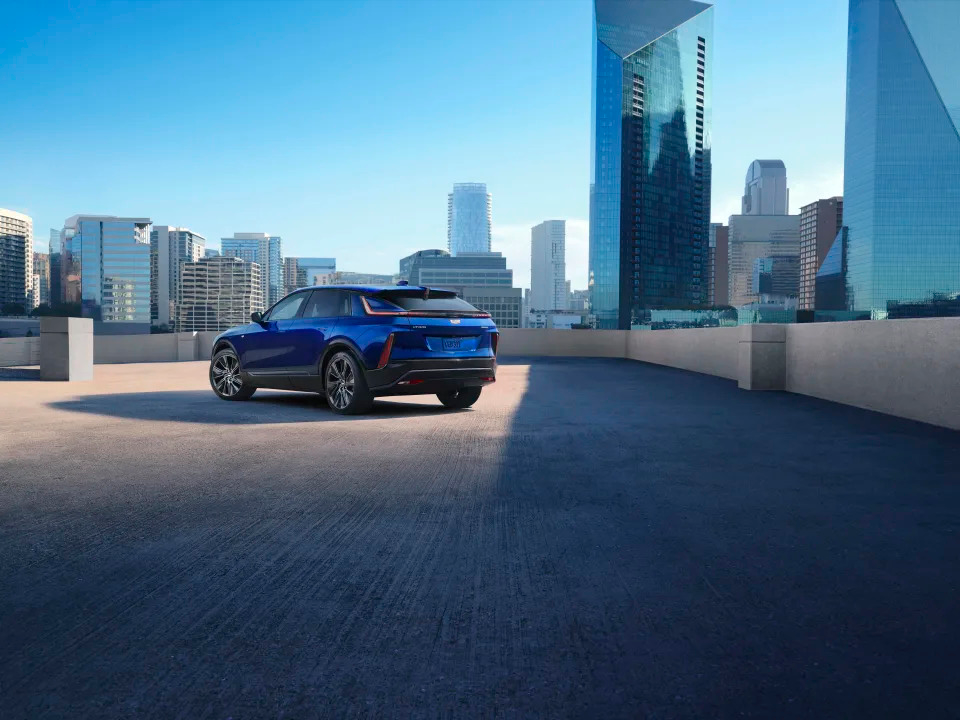GM (GM) didn’t use its mainstay Chevrolet or Buick brands to launch its first large-scale electric vehicle using its in-house battery platform. It used Cadillac.
The Lyriq (styled LYRIQ) is Cadillac’s first EV and the first mainstream GM vehicle (other than the limited-quantity Hummer) to use the Ultium platform — and so far it’s looking like a win for GM. GM president Mark Reuss said last month that the Lyriq is off to a great start, with Cadillac doing “close to 3,000” sales a month. That’s leading to more and more Lyriqs on the street, though at least in New York City, they’re mostly seen in use with high-end livery or Uber black car service.
One thing that separates the Lyriq from other cars, EVs, and GM vehicles on the road is its styling. Bold is an understatement, as the angular and hard-edged Lyriq has no room for things like “curves.”
Design is subjective, but my colleague Rick Newman and I both say the two-row, five-passenger Lyriq’s design is handsome. The interior is also compelling. Over the past five years or so, Cadillac has really upped the game in terms of materials, fit, and finish — and it shows in the Lyriq, with its soft-touch materials dominating the appointments.
The massive 33-inch curved LED infotainment screen is prevalent in all Cadillacs now, and in the Lyriq it features crisp graphics and is quite responsive.
Newman wasn’t impressed, however, with the various submenus and the inevitable hunting to find options like opening the glovebox, which does not have a manual button and has to be opened from the screen. While more frequently used features like climate control and the audio system do have redundant physical controls, we’d still really like a physical button for the glovebox release.
Our Lyriq in the mid-level Luxury trim featured a single rear-wheel drive (RWD) motor, good for 340 horsepower and 325 lb-feet of torque, with an EPA-estimated 314 miles of range. The AWD version with 500hp and 307 miles of range might be the preferred option, but the RWD Lyriq was plenty quick enough in our city and local highway testing.
Power came on smoothly, which befits a vehicle like a Cadillac, and the car’s regenerative braking could be modulated with a paddle on the steering wheel, allowing for smoother stops (regen braking can also be adjusted for one-pedal driving).
Some regen systems cause such abrupt slowdowns that they can actually cause motion sickness for passengers. Cadillac seems aware of this and is trying to remedy that possible issue.



